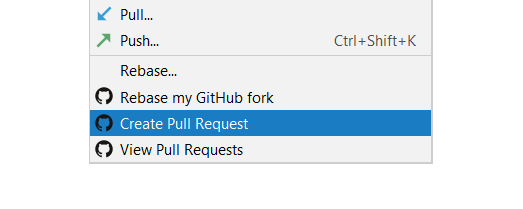
Note: Copilot for Business does not retain any Prompts or Suggestions. To confirm your new settings, click Save.Įnabling or disabling code snippet collection Under Suggestions matching public code, select the dropdown menu, then click Allow to allow suggestions matching public code, or Block to block suggestions matching public code. In the left sidebar, click GitHub Copilot. In the upper-right corner of any page, click your profile photo, then click Settings. If there is a match or near match, the suggestion will not be shown to you. When the filter is enabled, GitHub Copilot checks code suggestions with their surrounding code of about 150 characters against public code on GitHub. You can choose to enable or disable the filter. GitHub Copilot includes a filter which detects code suggestions matching public code on GitHub. Your duplication detection setting will be inherited from your organization or enterprise. You’re done! Submit a link to your repo on the next step.Įstimated time for task completion: 30-60 minutes depending on your learning style.Note: If you are a member of an organization on GitHub Enterprise Cloud who has been assigned a GitHub Copilot seat through your organization, you will not be able to configure duplication detection in your personal account settings. Commit your changes and push them to GitHub! With your virtual environment active, run pip install "dash" (without backticks) to install all the necessary dash testing dependencies.Ĭongratulations! You’ve completed the bulk of the work for this task and now have access to a fully-featured workbench.

Instructions for this step can be found in the Resources section below. Next, add the dash and pandas packages as dependencies to your virtual environment. Review the resources linked below for more information. For this project, you will set up a Python 3.9 virtual environment. They are entirely encapsulated in a single folder, and easy to work with once you get the hang of them. Each virtual environment contains a Python interpreter and a collection of project dependencies. One of the best ways to manage dependencies in Python is with virtual environments. It’s a well-designed IDE by Jetbrains packed with features and plugins, powerful enough to work on the most complex projects, and entirely free. If you don’t have a favourite Python IDE yet, look at Pycharm Community Edition. Open the project in your IDE of choice - feel free to use any Python IDE you’re comfortable with.


If this step is confusing, read the first two chapters of the Git book linked below. To begin, get your hands on the starter repo - fork and clone it to your machine. This repo contains everything you need to get started on the program! Good luck! Task 1: Set Up Your Local Development Environment


 0 kommentar(er)
0 kommentar(er)
